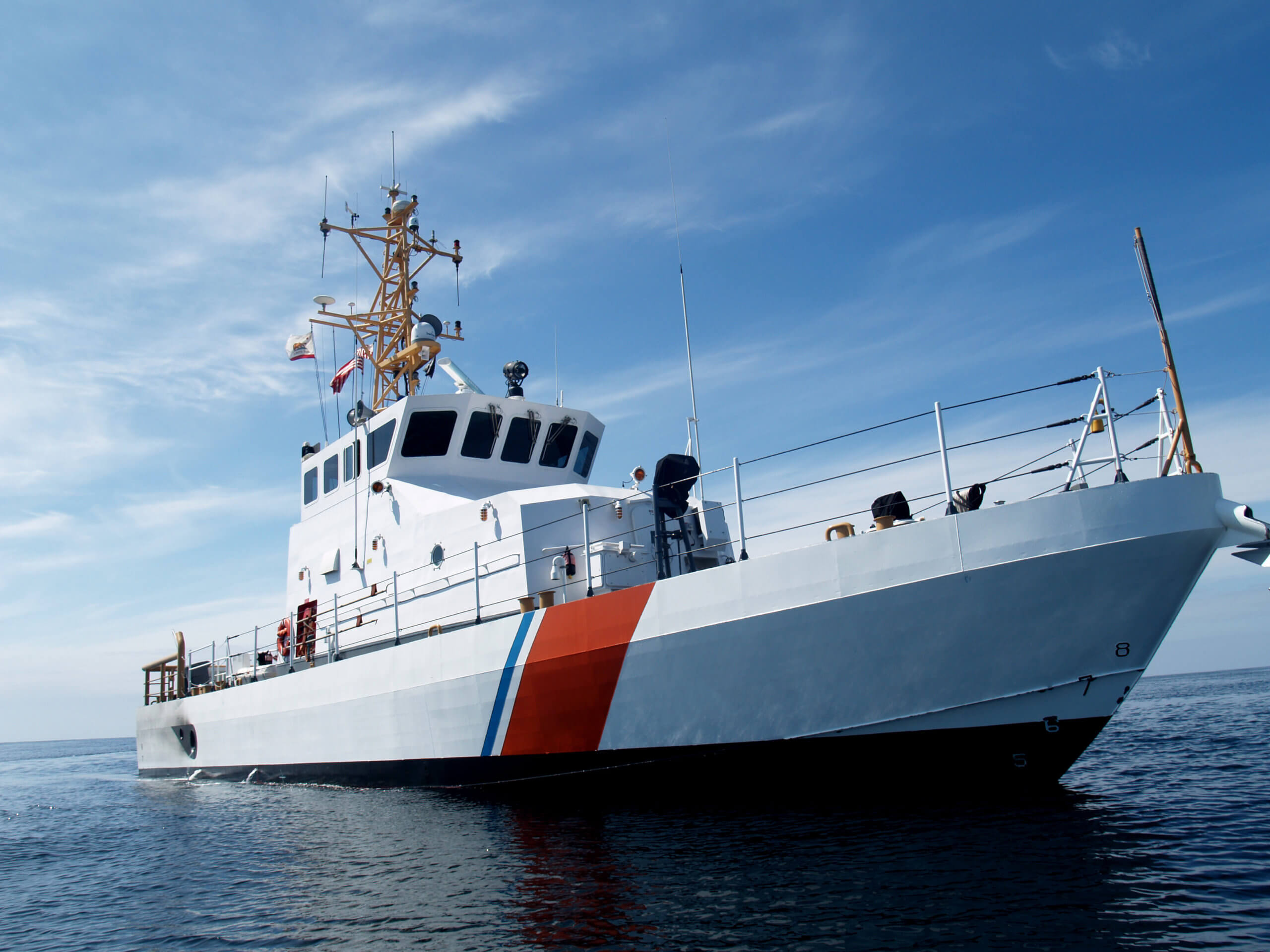Preventing A Collision At Sea, Part XV

As we continue our numerical march through the International Regulations for Preventing Collisions at Sea, or COLREGs, you may have noticed that these columns have focused largely on powered vessels. But what about those vessels that are powered by the most ancient of sources — wind and physical manpower? Read on, sailor.
Rule 25 – What Does It Say?
It covers sailboats and “vessels under oars.” With respect to sailboats, the rules look to find a way to telegraph to you that the vessel you are closing in on at night is underway, but not a power boat. How? Well, it is lighted like a power boat, save one feature — it has no mast light. Sailboats are required, like powered vessels, to have side lights (red and green) and a stern light, but no mast light.
If the sailing vessel is under 20 meters (remember the 3x + 10 percent rule of thumb, so approximately 66 feet), she may exhibit an all-around light at the top of her mast — white shining astern, red and green abeam and ahead, port and starboard. The light itself shall (must!) conform to the exact degree specifications we talked about with respect to Rule 21 — remember those “jet wings” we talked about.
What if you come upon a vessel at night exhibiting the side-light-stern-light configuration of a sailboat, but also, high above, you see two lights — red over green? Under Rule 25 (c), a sailboat may also exhibit the red-over-green configuration at the top of her mast to make her easier to see — “red over green, I’m sailing tonight and want to be seen!” By the way, she cannot do it in conjunction with the all-around light we described above, regardless of her size. Under Rule 25 (d), a sailboat under 7 meters (approximately 23 feet) “may” exhibit the light configuration of her larger cousins, but if she isn’t fitted with them, she “shall have ready at hand an electric torch (a flash light, Bunky) or lighted lantern showing a white light that shall be exhibited in sufficient time to avoid collision.” Often, the sailor will shine the light on the sail as it creates a larger palette.
Row, Row, Row Your Boat
What about rowing, which includes kayaks that are now, due to their growing popularity, among the highest sources of accidents and death at sea (or “at bay” or “at creek,” as it were)? The rule for (wo)man-powered vessels — of any size — is just like 25 (d) for sailboats (see above). How many kayakers out there have a flashlight under their decks? Or life jackets on them? The statistics on those that don’t are getting deadlier and deadlier by the year. Don’t be a statistic!
Lest we forget our new emphasis on shapes. Are sailing vessels required to display a shape, and when? Yes, there is a shape for sailing vessels, called the “cone, apex-downward.” It looks, or is supposed to look, like an ice cream cone. It is to be exhibited forward “where it can best be seen.” And when is it to be displayed? When the sails are up and the engine is on. In short, she must declare that “I am just a funny looking power boat right now,” and be expected to act and be treated accordingly. Just remember that there are no 100-0 accidents out there. She is still unable to respond as quickly and sharply as a powered vessel since her sails give her considerable “windage.”
By the way, sailing vessels under 12 meters (approximately 26 feet) “may” exhibit the shape, but are not required to.
If interested in joining the U.S. Coast Guard, email the author at JoinUSCGAux@aol.com.



